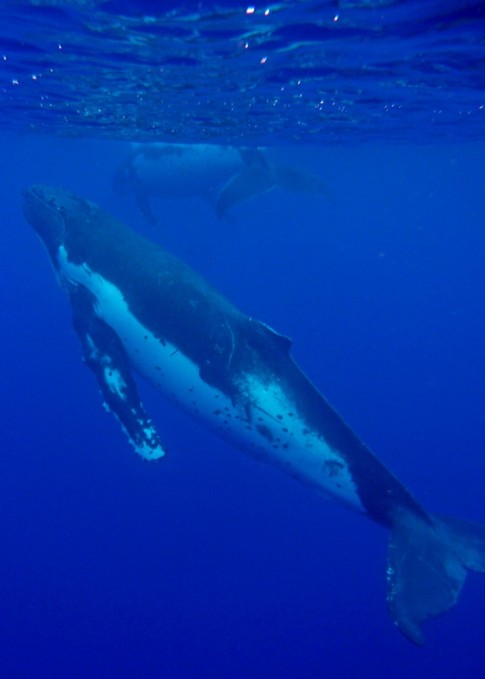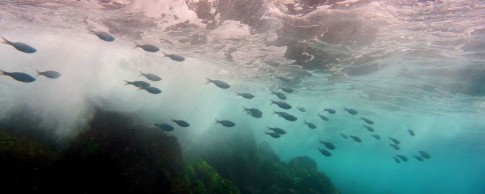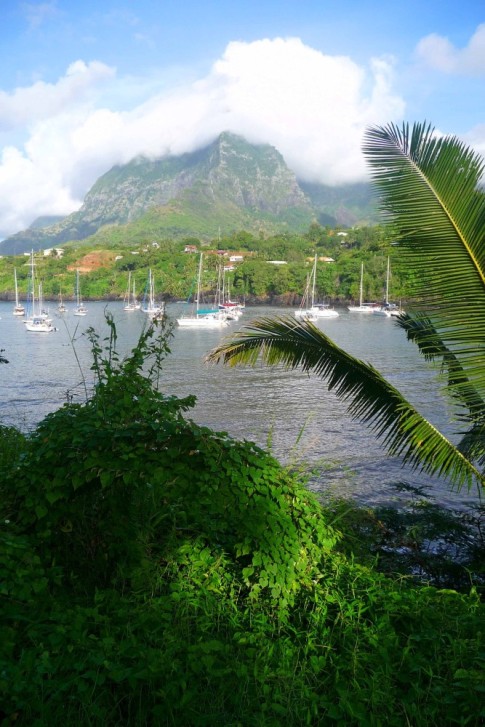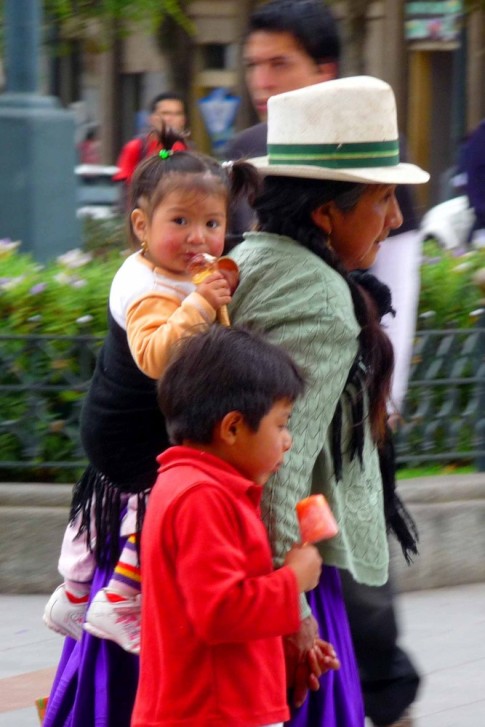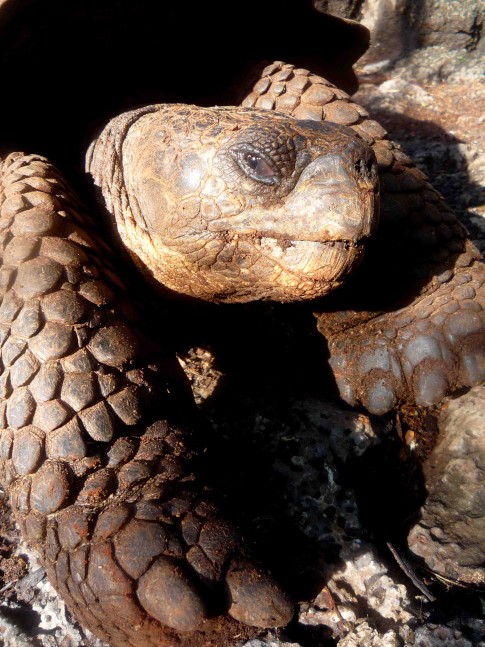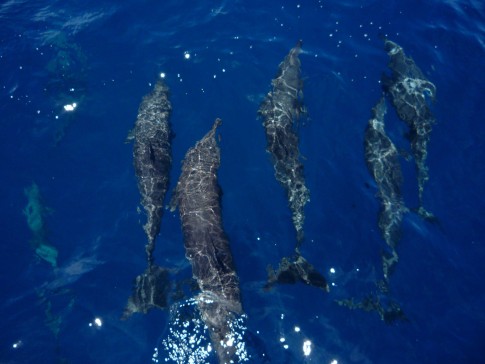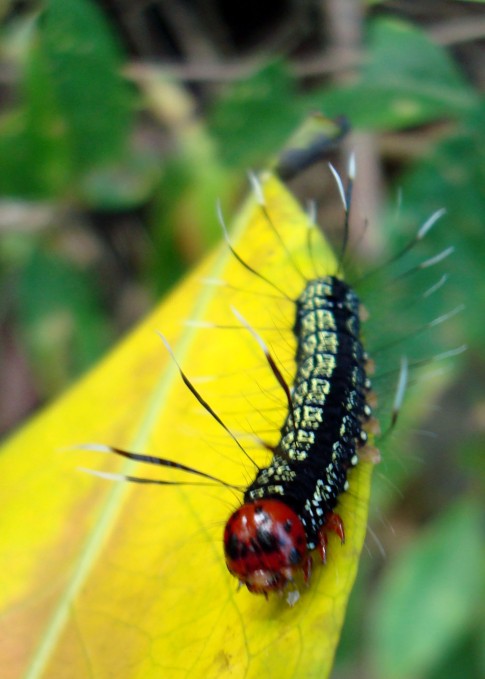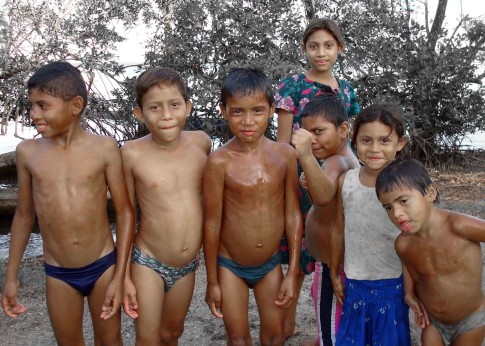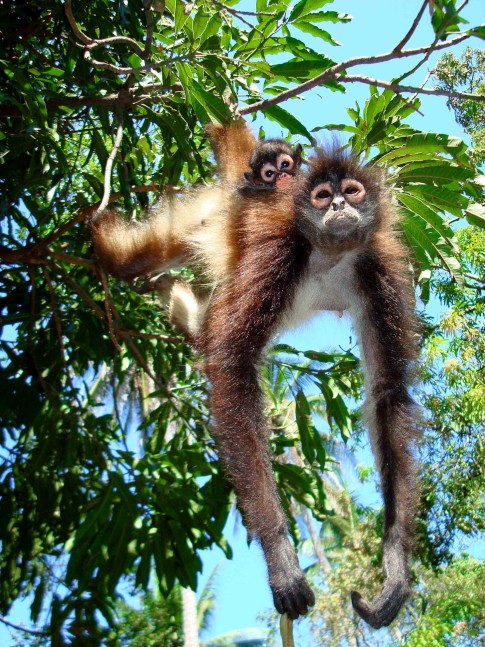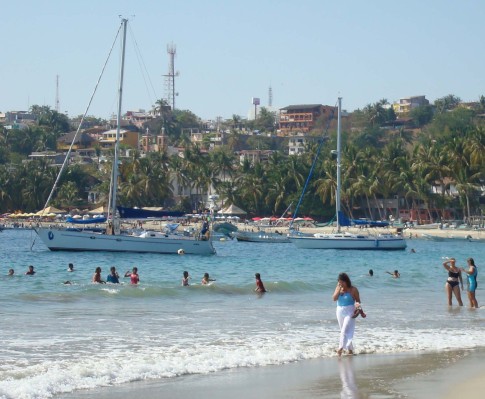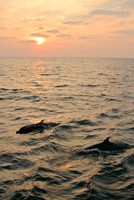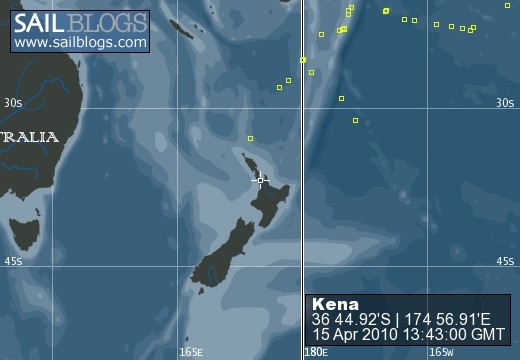
Kena
22 November 2009 | Tutukaka
11 November 2009
10 November 2009
09 November 2009
07 November 2009
07 November 2009
04 November 2009
03 November 2009
01 October 2009
29 September 2009
05 September 2009 | Nuku'alofa
27 August 2009
27 August 2009
23 August 2009
16 August 2009
14 August 2009
12 August 2009
09 August 2009
08 August 2009
08 August 2009
Fakarava
11 June 2009
Roger

The pass at the southern end of Fakarava atoll has maximum currents of 4 knots, so although the wind and waves were onshore, we had no problems entering. However, the charts show a depth of only 8 feet in the last hundred yards or so of the pass, and that's what we saw. Since we draw 7 feet and the water is extremely clear, from the bow we looked certain to hit bottom... but didn't. There is a small settlement at the pass, including several buildings out on pilings, a dive operation, and what looks like a resort with individual thatched roof bungalows.
It was 10am by the time we had anchored and we were making our way back out the pass in the dinghy to dive the pass. We made our way out to the drop-off (over 200 feet deep) where we found a yellow buoy that is used by the small dive operation. The seas were bouncy and the wind was still up, so the dinghy shipped water from time to time as we bounced our way out. Once in the water, we were in the usual deep, deep blue. Moments later, the first fish appeared---wahoo and some other species. After about 5 minutes, the first sharks appeared and soon there were 20 or 30 around us. As we started to see the bottom, the sharks disappeared. Since we were being blown towards the reef on the side of the pass, we went back out to the buoy again, but there were fewer sharks. Returning to the buoy a third time, we were joined by a dive group that descended at the buoy and started moving along the bottom into the pass.
This time, we towed the dinghy with us against the wind so that the current would take us into the pass. Unlike the previous passes, this one drops to 100 feet again once you're between the islands. The streams of bubbles rising from the bottom, where the divers were visible at over 80 feet, made a dramatic picture. As we entered the pass between the land, moving shapes could be made out on the bottom. Peering into the depths, we could see they were sharks. As we moved further in, and our vision acclimated, the shapes could be seen more clearly, and we all suddenly realized that the entire bottom that we could see was moving. There were, literally, hundreds of sharks moving around the bottom far below. As we watched and drifted, the first few rose towards us. Soon, the leading ones were within 20 feet and circling. Moments later, below and around us, we were the center of attention for the huge school. Large and small, they seemed a seething mass, like a cave floor with snakes in an Indiana Jones movie. Sal had jumped back into the dinghy when they first started rising towards us, and Bruce jumped in to grab the yellow fish bat. Tane was frantically snapping pictures and taking video. Every now and then, a couple of the sharks would twist and speed up, probably because, since they were so tightly packed, they had run into each other. We continued drifting well into the pass with the shark cloud circling us. Individual sharks would approach from behind, and when you turned toward them, they would veer off, as if to say, "Who, me? I'm not doing a thing". In the end, we were diving down into them to take photos of ourselves surrounded by sharks. Later, in one of the frames, we counted at least 84 sharks, and this was just in one direction. Hopefully, we'll be able to post this and many other photos when we reach Tahiti and a good internet connection.
We repeated the inner section of the pass dive four times. On the last run, only a couple of sharks rose to us, and Tane commented, "They're onto our game". We then drifted all of the way into the pass, towards the anchorage. The pass becomes much shallower, the coral, in color and variety. Here, there were hundreds of fish in and around the coral, and only the occasional shark. This is some of the most intensely colored, alive, and populated coral we've seen, and I would guess that it rivals the best anywhere. As we got closer to the boats, and much further into the lagoon, the coral became sparser, less alive, and iikh less populated with sea life.
Back on board, we were visited by a Kiwi, Mike, from Arielle, a Stevens 57 that had come in the pass and anchored as we were returning to the boat. It turns out that Mike bought Arielle in the US. He had had a construction business in Atlanta with a large payroll, but when immigration issues arose, he shut down after eight years, bought Arielle, and is on the way from the east coast of the US, through the Panama canal, to New Zealand.
With a brisk wind blowing from the north east, we raised anchor and started motoring to the south eastern corner of the atoll, a distance of about eight miles. We'd learned that Galivant was anchored there, along with Loren Grace and two other boats. The anchorage is much better protected from the north east winds, and has a sand bottom with little coral. On the way, we invited them for happy hour on Kena. It was great fun, but apparently I fell asleep toward the end---not surprising, given the fact that I had not slept on the overnight passage, then spent four hours diving before motoring to the anchorage.
It was raining in the morning, but we set off for the north eastern end of the atoll anyway. There are well marked channels, and the other boats had told us there were few coral heads. We anchored in heavy rain in the early afternoon, after motoring 30 miles along the inside of the atoll.
We'd heard that scuba diving the northern pass is an amazing experience, so our first step was to locate the dive operation and ask about the diving. We were told there was no need to make a reservation, and that it would be Tuesday before the weather would be amenable. Early on Monday morning, Bruce did a baguette run for breakfast. We spent the day visiting the villeage. Gunther, from Hinano Pearls, took us to the resort hotel 6 kilometers away, and then to his pearl processing operation where he showed us how the pearls are grown and seeded. It turns out that each good oyster is used three to four times, with each successive seed and hence pearl larger than the previous one. The best seeds are from Mississippi, and each pearl growing period is 18 months. The pearl layer over the seed has to be at least 0.8 millimeters thick. Needless to say, we came away with a few purchases from the attached store.
On Tuesday morning, Sal and Tane awoke with fevers and congestion. Tane had spent most of the night awake, feeling miserable. Needless to say, there was no chance of going diving. The only contact with someone who has been sick was with Kathy on Gallivanter, back in Tahanea. She had reported being bedridden for four to five days. Since bad weather was coming in within 48 hours, and we needed to have Bruce in Papeete for his flight home on the 13th, we made the decision to leave that morning for Tahiti.
The passage through the pass was in brilliant sunshine, and we were soon sailing very comfortably downwind and on course. The GRIB files (weather) told us we'd have about a day of good weather, then the winds would increase and back around from north east to south. We spent Wednesday barrelling along in winds up to 25 knots, with a series of heavy squalls. Just after dark, the wind suddenly dropped and we were in a very confused sea. Soon, the wind was dead against us, so we dropped sail and motored into it for several hours, making from 2 to 3 knots. Around 9 pm, we were able to set the main double reefed and a small jib, and spent the night bashing into rough seas and squalls, close hauled with winds from 20 to 25 knots, and gusts up to 30 knots. Dawn saw the bulk of Tahiti rising from the grey, with Moorea to the right. The wind has now dropped, the sun is out, and we're motoring the last few miles to Papeete, expecting to arrive between 1pm and 2pm.
It was 10am by the time we had anchored and we were making our way back out the pass in the dinghy to dive the pass. We made our way out to the drop-off (over 200 feet deep) where we found a yellow buoy that is used by the small dive operation. The seas were bouncy and the wind was still up, so the dinghy shipped water from time to time as we bounced our way out. Once in the water, we were in the usual deep, deep blue. Moments later, the first fish appeared---wahoo and some other species. After about 5 minutes, the first sharks appeared and soon there were 20 or 30 around us. As we started to see the bottom, the sharks disappeared. Since we were being blown towards the reef on the side of the pass, we went back out to the buoy again, but there were fewer sharks. Returning to the buoy a third time, we were joined by a dive group that descended at the buoy and started moving along the bottom into the pass.
This time, we towed the dinghy with us against the wind so that the current would take us into the pass. Unlike the previous passes, this one drops to 100 feet again once you're between the islands. The streams of bubbles rising from the bottom, where the divers were visible at over 80 feet, made a dramatic picture. As we entered the pass between the land, moving shapes could be made out on the bottom. Peering into the depths, we could see they were sharks. As we moved further in, and our vision acclimated, the shapes could be seen more clearly, and we all suddenly realized that the entire bottom that we could see was moving. There were, literally, hundreds of sharks moving around the bottom far below. As we watched and drifted, the first few rose towards us. Soon, the leading ones were within 20 feet and circling. Moments later, below and around us, we were the center of attention for the huge school. Large and small, they seemed a seething mass, like a cave floor with snakes in an Indiana Jones movie. Sal had jumped back into the dinghy when they first started rising towards us, and Bruce jumped in to grab the yellow fish bat. Tane was frantically snapping pictures and taking video. Every now and then, a couple of the sharks would twist and speed up, probably because, since they were so tightly packed, they had run into each other. We continued drifting well into the pass with the shark cloud circling us. Individual sharks would approach from behind, and when you turned toward them, they would veer off, as if to say, "Who, me? I'm not doing a thing". In the end, we were diving down into them to take photos of ourselves surrounded by sharks. Later, in one of the frames, we counted at least 84 sharks, and this was just in one direction. Hopefully, we'll be able to post this and many other photos when we reach Tahiti and a good internet connection.
We repeated the inner section of the pass dive four times. On the last run, only a couple of sharks rose to us, and Tane commented, "They're onto our game". We then drifted all of the way into the pass, towards the anchorage. The pass becomes much shallower, the coral, in color and variety. Here, there were hundreds of fish in and around the coral, and only the occasional shark. This is some of the most intensely colored, alive, and populated coral we've seen, and I would guess that it rivals the best anywhere. As we got closer to the boats, and much further into the lagoon, the coral became sparser, less alive, and iikh less populated with sea life.
Back on board, we were visited by a Kiwi, Mike, from Arielle, a Stevens 57 that had come in the pass and anchored as we were returning to the boat. It turns out that Mike bought Arielle in the US. He had had a construction business in Atlanta with a large payroll, but when immigration issues arose, he shut down after eight years, bought Arielle, and is on the way from the east coast of the US, through the Panama canal, to New Zealand.
With a brisk wind blowing from the north east, we raised anchor and started motoring to the south eastern corner of the atoll, a distance of about eight miles. We'd learned that Galivant was anchored there, along with Loren Grace and two other boats. The anchorage is much better protected from the north east winds, and has a sand bottom with little coral. On the way, we invited them for happy hour on Kena. It was great fun, but apparently I fell asleep toward the end---not surprising, given the fact that I had not slept on the overnight passage, then spent four hours diving before motoring to the anchorage.
It was raining in the morning, but we set off for the north eastern end of the atoll anyway. There are well marked channels, and the other boats had told us there were few coral heads. We anchored in heavy rain in the early afternoon, after motoring 30 miles along the inside of the atoll.
We'd heard that scuba diving the northern pass is an amazing experience, so our first step was to locate the dive operation and ask about the diving. We were told there was no need to make a reservation, and that it would be Tuesday before the weather would be amenable. Early on Monday morning, Bruce did a baguette run for breakfast. We spent the day visiting the villeage. Gunther, from Hinano Pearls, took us to the resort hotel 6 kilometers away, and then to his pearl processing operation where he showed us how the pearls are grown and seeded. It turns out that each good oyster is used three to four times, with each successive seed and hence pearl larger than the previous one. The best seeds are from Mississippi, and each pearl growing period is 18 months. The pearl layer over the seed has to be at least 0.8 millimeters thick. Needless to say, we came away with a few purchases from the attached store.
On Tuesday morning, Sal and Tane awoke with fevers and congestion. Tane had spent most of the night awake, feeling miserable. Needless to say, there was no chance of going diving. The only contact with someone who has been sick was with Kathy on Gallivanter, back in Tahanea. She had reported being bedridden for four to five days. Since bad weather was coming in within 48 hours, and we needed to have Bruce in Papeete for his flight home on the 13th, we made the decision to leave that morning for Tahiti.
The passage through the pass was in brilliant sunshine, and we were soon sailing very comfortably downwind and on course. The GRIB files (weather) told us we'd have about a day of good weather, then the winds would increase and back around from north east to south. We spent Wednesday barrelling along in winds up to 25 knots, with a series of heavy squalls. Just after dark, the wind suddenly dropped and we were in a very confused sea. Soon, the wind was dead against us, so we dropped sail and motored into it for several hours, making from 2 to 3 knots. Around 9 pm, we were able to set the main double reefed and a small jib, and spent the night bashing into rough seas and squalls, close hauled with winds from 20 to 25 knots, and gusts up to 30 knots. Dawn saw the bulk of Tahiti rising from the grey, with Moorea to the right. The wind has now dropped, the sun is out, and we're motoring the last few miles to Papeete, expecting to arrive between 1pm and 2pm.
Comments
| Vessel Name: | Kena |
| Vessel Make/Model: | Ganley Pacemaker 40 |
| Hailing Port: | Tutukaka, New Zealand |
| Crew: | Roger, Sally, Tane, Hunters all |
| About: | The Hunter family: Roger, originally from Tutukaka, New Zealand Sally, from Tasmania, Australia and Tane is from New Mexico. |
| Extra: | This leg of the trip is from Puerto Lucia, Ecuador to New Zealand. |
Kena's Photos - Main
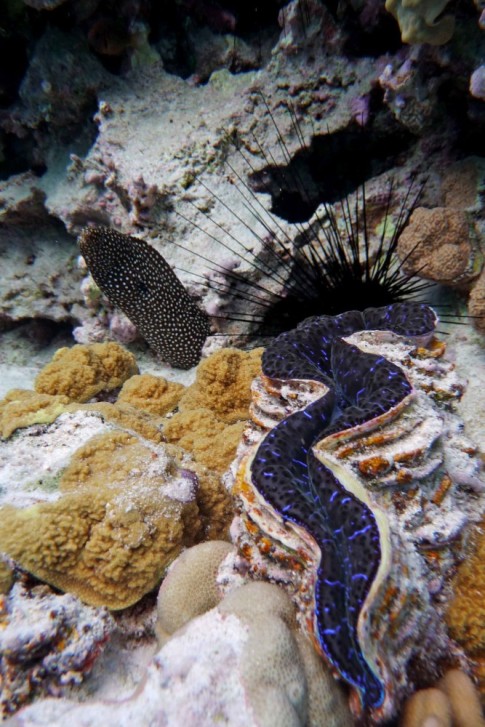 |
A few picks of Roratonga, where we picked up Tomas, and of the incredible Beveridge Reef
20 Photos
Created 1 September 2009
|
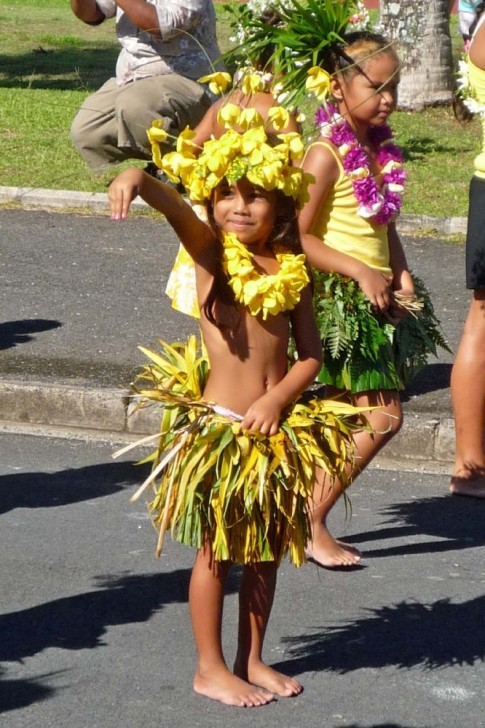 |
Our adventure in the islands of Tahaa and Raiatea in The Society Islands
18 Photos
Created 5 August 2009
|
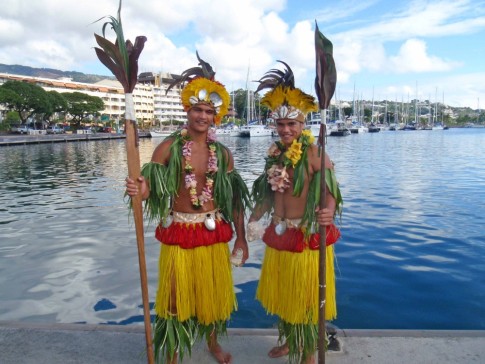 |
The Sailing Rendezvous in Tahiti and Moorea, plus a little of Huahine
35 Photos
Created 5 August 2009
|
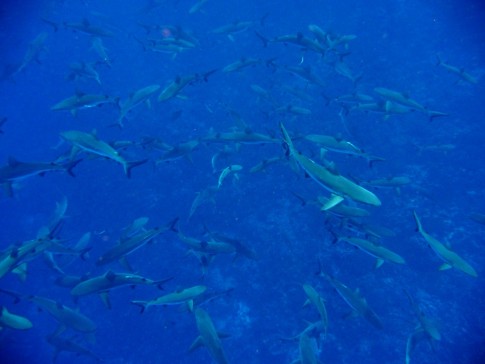 |
Our journey through the coral atolls of the Tuamotus in French Polynesia
65 Photos
Created 19 June 2009
|
S/V Kena
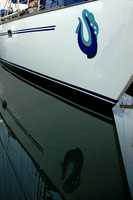
Who: Roger, Sally, Tane, Hunters all
Port: Tutukaka, New Zealand
